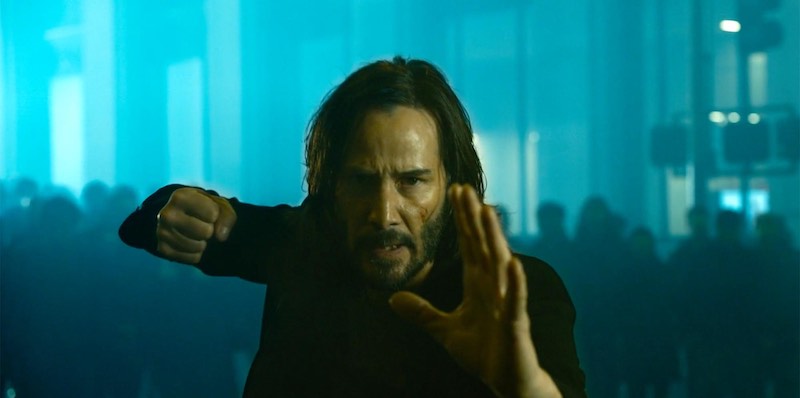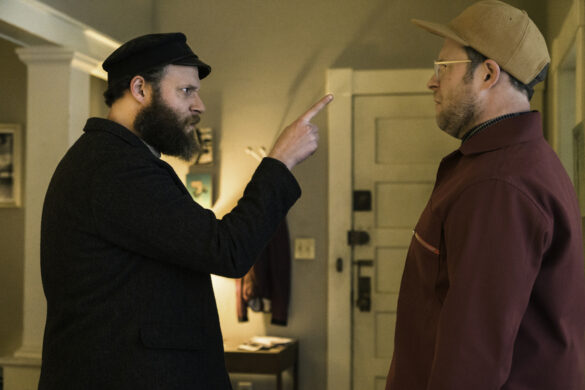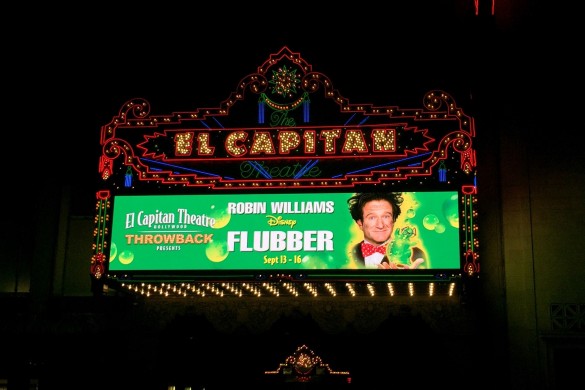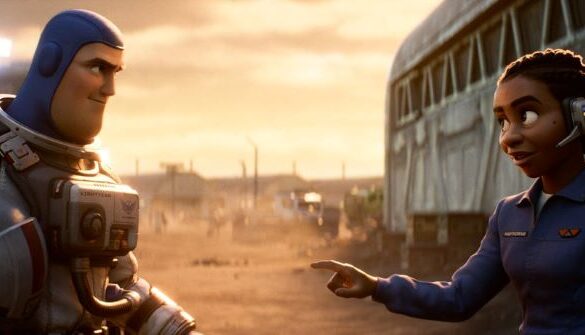The original Matrix Trilogy redefined the action genre with innovative technology and deeper existential themes. While it would be 18 years since its story of the war between humans and machines came to a flimsy end, the franchise’s more prominent impact on pop culture and the modern-day lexicon that makes up the current political climate remains prevalent. A lot has changed between then and now with how we consume entertainment and what we would like to see. As such, director Lana Wachowski injects those changes we’ve seen in “The Matrix Resurrections” and creates something that’s explosive fun yet incredibly complex. And it’s those same complexities that could end up being the film’s undoing.
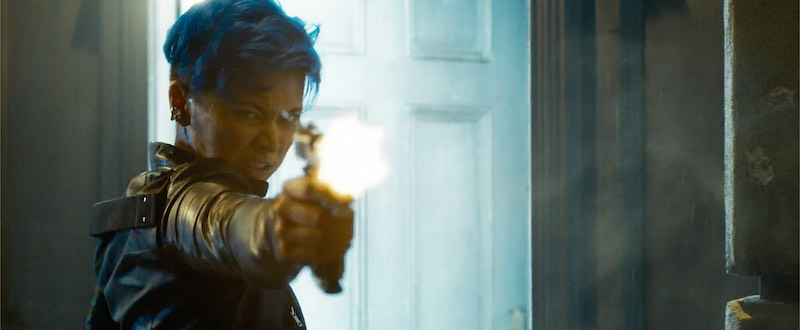
Set 20 years after “The Matrix Revolutions,” Neo (Keanu Reeves) lives his life under his original Matrix identity, Thomas Anderson. Though he is a successful game developer, he has trouble coping with a trauma that he cannot define. But with the help of his therapist, Thomas takes the prescribed blue pills to counteract the strange and unnatural things he occasionally glimpses.
As Neo tries to grapple with the reality of his situation, Bugs (Jessica Henwick) and a new version of Morpheus (Yahya Abdul-Mateen II) discover that Neo and Trinity are alive. Together, they help free Neo from the world of the Matrix, which has become more dangerous than ever since the events of “The Matrix Revolutions.” With a newly freed Neo joining their crew, they must now find a way to free Trinity, all the while fighting a new enemy.
One of the beautiful things about “The Matrix” film franchise is how it introduces deeper themes while weaving in newer ideas to expand the larger mythology. And “The Matrix Resurrections” does that successfully to varying degrees. What’s especially fun to see is how incredibly meta the sequel is. It pokes fun at itself as content creators design have designed a game based entirely on the premise of the original trilogy. And of course, if they want legacy players to continue to play and get new players, they will need to keep building upon it rather than do something new and original.
In fact, “The Matrix Resurrections” makes a point of echoing the past through its dialogue and the visuals that recycle footage from the previous films and iconic action set pieces. The former’s dialogue pulls from three films directly or puts a fun new twist on classic lines. For the visual, “The Matrix Resurrections” flashes various encounters and fights of the past and brings classic human characters like Niobe (Jada Pinkett Smith) and those from the Matrix, like The Merovingian (Lambert Wilson), back. Things have even changed for Morpheus, who ultimately has taken on a new form but still carries the same sharp look and steely attitude, thanks to a revered performance by Mateen II. Even Smith gets a fancy upgrade as Groff brings in a new kind of charm and energy to the franchise’s most prominent villains.
While things have changed, some remain the same. More or less. A larger problem for “The Matrix Resurrections” is introducing these new ideas, which are fun at first but only add to the convolution. The film itself is aware of how much time had passed between now and 18 years ago when the franchise raced to conclude a trilogy. As such, it has given Wachowski the material needed to expand the trilogy while recognizing the changes that have occurred in pop culture and how we consume our entertainment. The same gap is also a result of the changing dynamics and politics between humans and machines, which will shock some of the characters and many audiences.
And a lot of those themes reflect Wachowski’s original reluctance to move forward with a third sequel. These ideas of cooperate overlords wanting to cash in on existing IPs through sequels and reboots aren’t new but speak to the idea that Hollywood is scraping the bottom of the barrel or forcing creators’ hands.
That said, “The Matrix Resurrections” is more vocal about its representation of LGBT!+ and PoC than it was in any of its previous chapters. Of course, being able to see one’s self in these heroes is one thing. Still, it is also a reflection of a future where the world accepts these marginalized communities as they unite to fight against a common enemy like the machines.
But because Wachowski introduces these new concepts in how the world operates or why some favorite fan characters have different faces or names at such a rapid-fire pace, it becomes difficult to follow along with what’s happening. But, of course, complexity within this world is nothing new. And it’s far more interesting to see how the Matrix has adapted and changed than any of the incomprehensible technological jargon and terminology that allows agents to interact with the human space or how operators like Sequoia (Toby Onwumere) can guide its plugged-in heroes to safe passage. And while the film uses that same gap in time to its advantage to help further expand the mythology, in some cases, some things are better simplified rather than overly complex.
Still, the flashbacks are helpful storytelling tools that reacquaint the legacy fans with the world if they haven’t revisited the Matrix and a quick recap for the newer fans who are just stepping foot into the franchise. Wachowski makes use of these flashbacks disguised as painful reminders for Neo or archive footage projected on tattered and tapered drapery that make for a fantastic visual aesthetic. Though the flashback utilization is just SparkNotes with a dual purpose, it ultimately doesn’t help with the story as a whole as it comes off as a flashy set piece or a nostalgic look back on the past.
It’s not even clear what the main plot of “The Matrix Resurrection” has the two plot lines jostle over control of the core narrative. Though the inevitable Neo and Trinity reunion serves as the beating heart of the sequel, it often has to contend with the rescue mission and some of the internal politics that have kept the humans safe and the machines in control. The meta jokes can be funny at times, and the self-reflection gives more depth to the mythology. And the film has even more to say about our emotions and representation. But a lot of that humor and those themes feel rushed over so that the film could move to the next part of the story or action sequence.
Compounding all these new ideas and racing to help catch everyone up on current events only adds to the confusion of an already convoluted plot. It becomes harder to track what the film is about every time it turns away from the Neo and Trinity reunion fans anticipate seeing whenever it turns to the human world. Sure, part of it requires the visualization of humans planning to free Neo and Trinity, and the other part has to establish Neo and Trinity’s faux lives within the Matrix. Still, the two are so far separated from each other that they could have been made into two separate pieces of Matrix films. None of it gels particularly well together.
Still, there are a lot of interesting elements at play that leads up to some explosive fun. For example, escaping no longer requires picking up landline phones as our human heroes transport themselves across the globe simply by walking through a door or stepping through a mirror. This can lead to some very impressive camera work and trickery depending on the characters’ location. And the same can be said for how Agents intercept plugged-in humans by using a “swarm” technique that lives up to its name.
Though “The Matrix Resurrections” follows some new concepts and introduces some fun ideas, many of the action suffers due to lack of innovation and heavy use of the editing button. Even the choreography itself doesn’t have the same impact as its predecessors. Those jaw-dropping freeway chase scenes are traded in for a tight but very choppy city street pursuit. And the foot chase within the Matrix has a few new tricks, thanks partly to some improved camera work and technology. But for the most part, the action sequences that are the crown jewel of these films are non-existent.
But just because some of those signature elements are missing from the fourth chapter of the Matrix franchise doesn’t mean it’s any less fun. Groff and Mateen II are excellent additions to a world as they play alternate versions of legacy characters in their own unique way that updates and reveres simultaneously. Meanwhile, Henwick’s Bugs is a fun play on the Bugs Bunny namesake and on the idea of following the rabbit from “Alice in Wonderland.” And she’s one to courageously throw herself into danger and rebel against her superiors in more ways than one. But because the story revolves around Neo and Trinity and a revamped Morpheus and Smith, her arc gets overshadowed. That said, it’s a character that is worth exploring as she has a lot of potential leading her own stories, should there be any subsequent sequels.
There’s no doubt that “The Matrix Resurrections” will be a divisive film. I even find myself conflicted with coming to terms with finding a final score. However, the film’s strengths lie with its meta-commentary, surprising humor, and some outstanding performances from Reeves and Moss reprising their roles. Groff and Mateen II also shine as they honor the legacy of their characters with their take on fan-favorites Smith and Morpheus, respectively. And while expanding on these characters and exploring new themes helps build upon the rock that is “The Matrix” film franchise, the sequel has its issues. The sequel doesn’t even know if it is for the legacy fans or the new generation.
Furthermore, its plot is too convoluted for its own good, even by “Matrix” standards. And, it’s so focused on living in the past that it forgets to do anything substantial to establish the future. But one must respect Wachowski’s resolve to move forward with something she was reluctant to do and tell the story she wanted to tell.
The Matrix Resurrections in theaters and HBO Max December 22.
8/10

